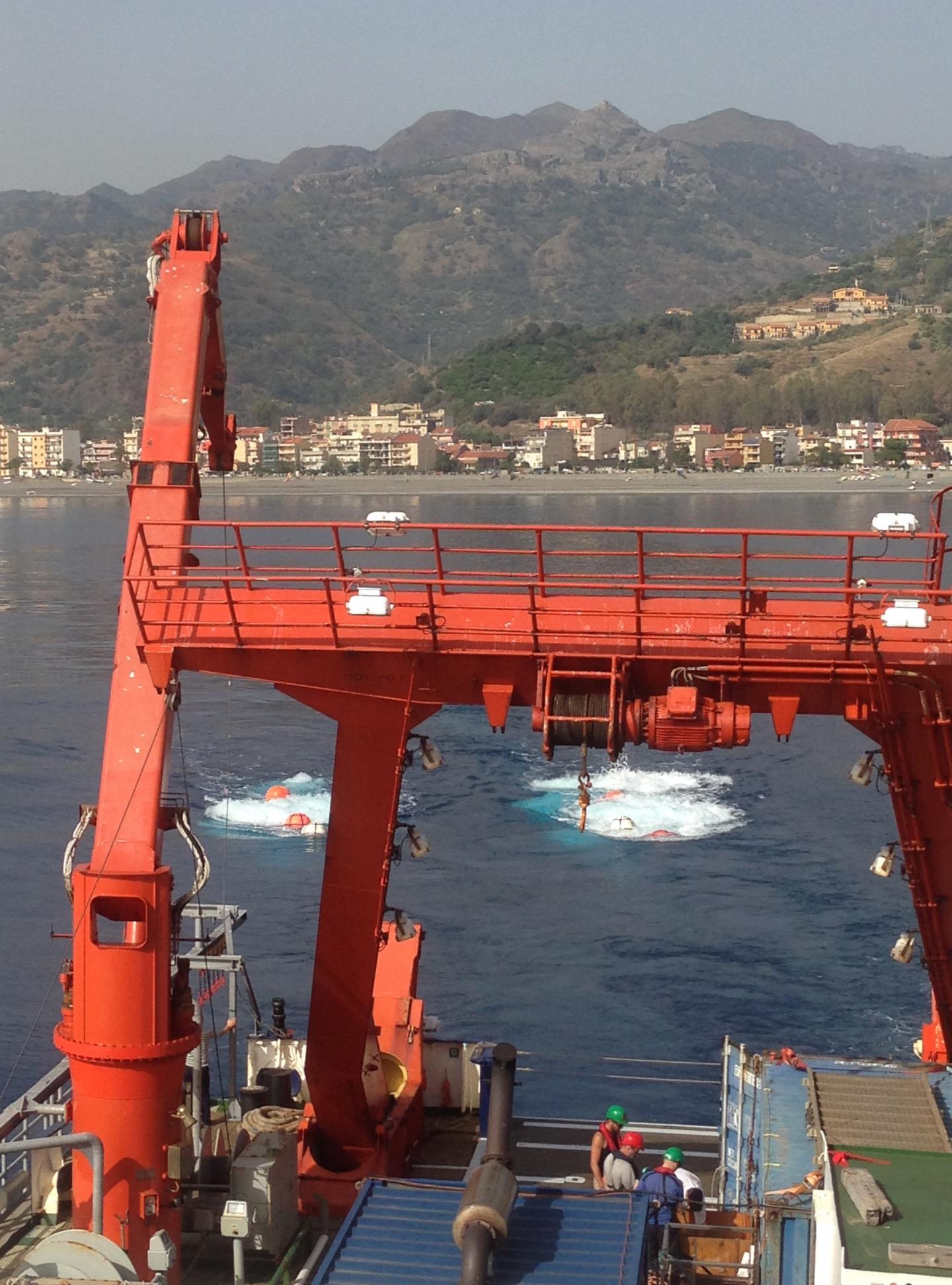
Credit: Heidrun Kopp, GEOMAR
Since the early civilizations, the lives of people in Europe, in the Middle East, and in North Africa have been closely linked to the Mediterranean. Natural catastrophes such as volcanic eruptions, earthquakes and tsunamis have repeatedly shattered cultures and states in this area. The reason for this constant threat is that in the Mediterranean the Eurasian plate and the African plate interact. "Unfortunately, the tectonic situation is very complicated, since there are many different fault zones in this area. This makes an exact hazard analysis for certain areas very difficult", explains Prof. Dr. Heidrun Kopp Geophysicist at GEOMAR Helmholtz Centre for Ocean Research Kiel.
Together with colleagues from France, Italy and Spain, as well as from the Universities of Kiel and Bremen, the scientists now published their results of extensive investigations of the seafloor off the coast of Sicily and Calabria in the current edition of the international scientific journal Earth and Planetary Science Letters. The research campaigns have provided evidence that a plate boundary in the region shows current activity. "From historical natural disasters we know about the geological processes in this area, but so far the causes have not been well known. Now we are beginning to understand them better", says Professor Kopp, co-author of the study.
The results are based on six ship expeditions since 2010, including three with the German research vessel METEOR. During these expeditions the respective teams have mapped the seafloor using state-of-the-art technologies. In addition, the scientists have used seismic methods to investigate the structure of the ocean floor up to a depth of 30 kilometres.
"We already knew before that sedimentary layers in this region are typical for a situation when one plate slides underneath the other. However, it has been controversial whether these structures are old or whether the so-called subduction process is still active", explains Heidrun Kopp. The new investigations now show that the plates are still moving – "slowly, but in a way that they can build up stresses in the interior of the Earth", Professor Kopp adds.
The region investigated in this study is of great interest because in the past it has repeatedly been hit by devastating earthquakes and tsunamis. For example, an earthquake in the Messina strait in 1908 and a subsequent tsunami called for 72,000 lives.
"Of course, with the new findings, we can not predict if and when a severe earthquake will occur. But the more we know about the seafloor and its structure in detail, the better we can estimate where the probability of natural hazards is particularly high. Then actions for hazard mitigation and building regulations can reduce the risks", says Prof. Dr. Kopp.
###
Reference: Gutscher, M.-C., H. Kopp, S. Krastel, G. Bohrmann, T. Garlan, S. Zaragosi, I. Klaucke, P. Wintersteller, B. Loubrieu, Y. Le Faou, L. San Pedro, S. (2003): Theory and Functional Biology of the Calabrian Subduction, by M. Rovere, B. Mercier de Lepinay, C. Ranero, V. Sallares (2017): Active tectonics of the calabrian subduction. Central Mediterranean). Earth and Planetary Science Letters, 461, 61-72, http://dx.doi.org/10.1016/j.epsl.2016.12.020
Note: The expeditions M86 / 2 and M111 of the FS Meteor were supported by the German Research Foundation (DFG). The bathymetric data is available through the European Marine Observation and Data Network (EMODnet).
Media Contact
Andreas Villwock
[email protected]
@geomar_en
http://www.geomar.de
############
Story Source: Materials provided by Scienmag




